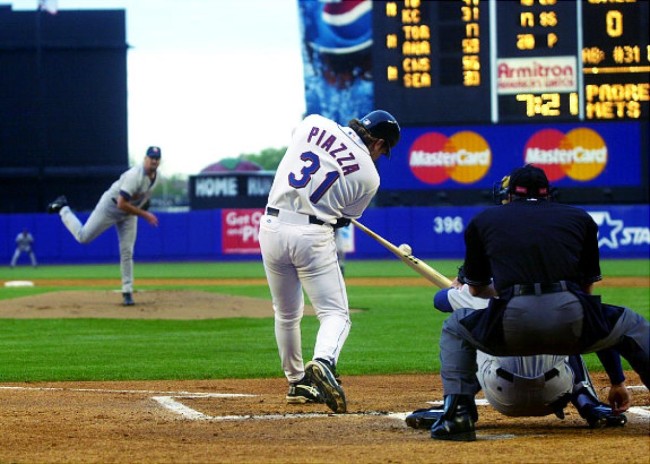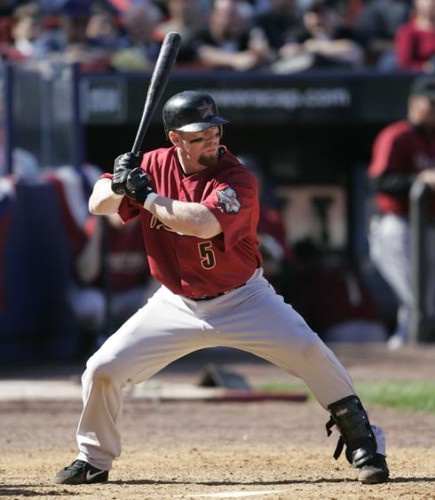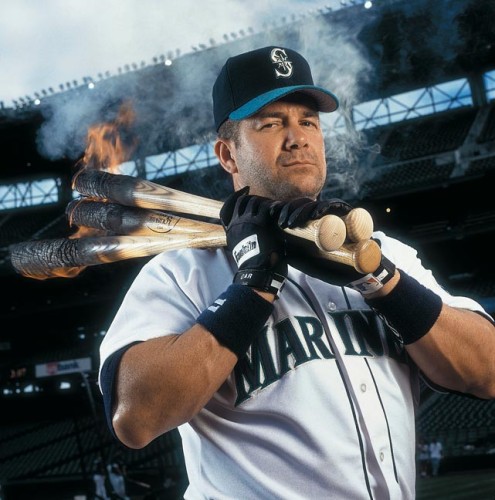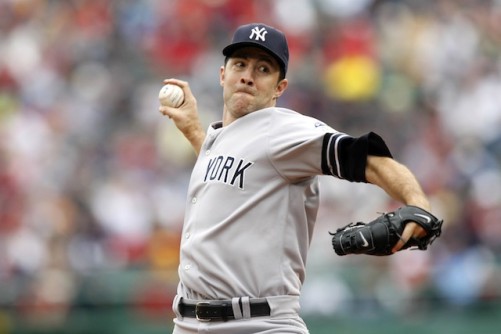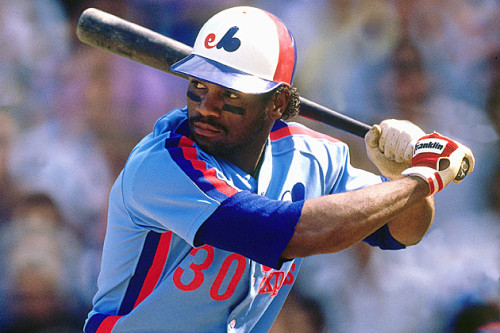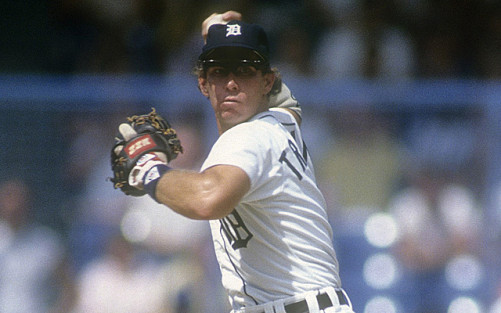It’s time once again for that holiday tradition that absolutely nobody is calling for – my analysis of the Baseball Hall of Fame’s 2016 ballot. I’ve been told by a grand total of zero (0) peeps that this is their go-to for the Hall of Fame election process, and I aim to please our readership. This year, we’ve got 32 players to examine (once again, a decline of 2 players from last year), and I aim to cast guidance as to whether or not the player is getting in, along with some idea of whether or not they’re going to be making any gains in the voting this year.
We’ve had a pretty historically great run of ballots of late. After the 2012/2013 debacle where nobody was elected, the writers have elected three and four players to the hall. Granted, six of those were first ballot Hall of Famers, all-time greats from an era rich in star power, but still, 7 players in two years is a pretty strong run. There are several good players on ballot again this year, with one nearly guaranteed to go in by a wide margin. And then there are several players who have been building cases for years who may finally break through the cluster now that there are more votes to go around.
Another interesting thing to note is that the Hall of Fame has purged its voter rolls a bit this year. Gone are the long retired, long irrelevant writers who haven’t actively covered the game for years on years. Gone are those writers with a marginal claim to baseball authority, the golf digest writers, etc. This means that there will be a much leaner voting body this year, and a lower expected total number of ballots. Last year, the total number of received ballots was 549, with 412 guaranteeing election. This year, the total number of expected ballots per Ryan Thibodeaux at bbhoftracker.com is around 450, which would mean that 338 votes would guarantee election.
Add in a couple of other factors – newer voters more exposed to different attitudes of thinking, the Hall coming out publicly against turning in blank ballots, an increased sense of urgency for some candidates – and you have a ballot that’s as interesting to watch to see who will be making gains as the ballots were in the last two years to see who would gain election.
I’ve gotten a late start on the analysis this year, so the columns will be coming in fast for a bit here. But then, if you’re reading this column, you’re a Hall of Fame junkie like me and can’t get enough, so I’m not really that upset. So, on that note, let’s get started.
NOTE: I’ll be breaking this down into three chunks. The first part will deal with the Holdovers – those who have remained on the ballot from last year after gaining at least 5% of the vote. The second will deal with the Newcomers – those who have been selected to populate the ballot after having played for at least ten years in MLB and having been retired for five years. The last will bring about my predictions for the final ballot, with some guesses as to what trends we will see.
In these columns, I’m not going to be making a detailed statistical analysis of each player. Rather, I’ll be studying voting trends and estimating why players are going to be voted on or not voted on, as well as what trends are likely to reveal themselves this year. I’m much more of a voting stats junkie than an in-game stats junkie, and voting trends have proven themselves to be infinitely more fascinating to me over the years I’ve done this series. It’s going to be an interesting year.
Numbers are current as of 12/20/2015 at 12:30 pm. All numbers via bbhoftracker.com
JEFF BAGWELL
Bagwell is on his sixth ballot and has been stuck in an up/down cycle as he deals with two issues. The first is that injuries forced him to retire before accumulating the round numbers that several older voters seem to love so much. The second is allegations of steroid use, as well as his admitted usage of andro during the time it was a legal supplement. Because of this, Bags only gained 1% point last year, climbing up to 55% of the vote.
Normally, this might bode poorly. However, there are several interesting factors to look at. If the total expected ballot number holds at 450, and 338 guarantees election, then Bagwell’s 306 votes from last year are only 32 short of election. With only one sure-fire HOF electee this year (more on him next time), this means that several voters might want to spread the wealth around. Indeed, per BBHOFTracker, Bags has the second highest current gain of voters with +12 – with only 17.11% of the electorate having been revealed. At that pace, Bagwell is in line to receive 83.1% of the vote…which would mean election percentage along the lines of Frank Thomas, John Smoltz, and Craig Biggio in recent years. (Good company to be in)
There’s a lot that could change – that 450 number is not a fixed number by any means, and could be ultimately too low. However, recent trends indicate a leaning of sympathy towards Bagwell’s enshrinement. I feel as though this groundswell of sympathy will mark a large move towards his election this year. (Those 12 gained votes are from returning voters – he’s also at 100% of votes from new writers this year) Personally, his career speaks for itself – the dude belongs. Verdict: Too Close to Call…but He Gets In
BARRY BONDS
Meanwhile, voter trends of sympathy for one player don’t mean very much for other candidates. Mr. Bonds is dealing with a great deal of hostility from some voters – such that they won’t vote for any player of the same time period, no matter what the case for that player may be. Bonds and Roger Clemens have always polled higher in publicly revealed ballots than private ballots, but that’s a percentage last year of 39% for each player. The two are linked as Public Enemy #1 and #1A of the Steroid Era, and will have seven more ballots to circulate in shame.
Deserved or not is another case. I’ve come around on the idea that steroids alone cannot help a player hit home runs – look at Paul LoDuca (who, disclaimer, follows me on Twitter). It takes a fierce work ethic and strong competitive skills to be a great player – a series of strong workouts will not change that. Plus, the more one examines Bonds’ numbers from 2001 to 2004, the more you can see a player who broke the game of baseball not by his ability to hit home runs, but by his knowledge of the strike zone. Go back to 2004, where he set a record for walks, OPS, and on-base percentage – the dude was getting on base 6 out of 10 times in a game where getting on base 4 out of 10 justifies a $20 million per year deal. Bonds was a force that we will never see again.
It’s too bad that he had to be such an asshole. But then, the game might have made him an asshole. Either way, it’s a sad story. Verdict: Nope
ROGER CLEMENS
See previous paragraph. Verdict: Nope
NOMAR GARCIAPARRA
Frankly, it was amazing that Nomar got over 5% of the vote and gets to stick around for this year – that alone speaks to how good he was of a shortstop in his prime. Alas, 5.5% does not make one likely to roll over for the next ballot, even with a reduced membership. This year, I’m predicting that he’ll lose that brief joy in favor of candidates that need help (see the end of this column for their identity). Verdict: Falling Off The Ballot
JEFF KENT
The most likely candidate to be elected was a five tool player, with multiple strengths to his game. Jeff Kent was a one-tool player, an apt description of a man widely held to be a tool. With so many other great players above him lingering in ballot limbo, Kent seems doomed to down-ballot obscurity, a low drawing figure like Davey Concepcion or Don Mattingly who will linger for years and years before finally falling off. Verdict: Nope
EDGAR MARTINEZ
Here’s where things get interesting. In recent years, the election of Frank Thomas, along with a fuller appreciation of the career of David Ortiz, seems to have brought about a new line of thinking concerning the designated hitter’s role in the game. Martinez might be the greatest DH ever, and has been struggling to get back to his high percentage of 35.9% from three years ago. He’s on his seventh ballot, and his election wasn’t looking very likely.
However, with 17% of the ballot in, Martinez is currently the leader of gained votes with 13 (out of 77 currently tallied ballots). He’s only at 51%, but that’s a marked improvement so far for a player who needs to gain at least 150 more votes to even have a chance at getting elected. I feel like a Veteran’s Committee will ultimately provide Edgar’s path to the Hall, but if this trend holds, we could seen an interesting run towards his being elected on his 10th ballot in four years time. (By which time, we’ll have seen two to three more Star Wars movies – think about that.) Verdict: Bears Closer Watching
FRED MCGRIFF
See Jeff Kent, only with less tool-nish and more “Crime Dog”-ish history. McGriff was a favorite player of mine growing up, and it’s sad to see him linger in down-ballot obscurity. In a more gentle world, he might fall off the ballot. Alas, several writers feel as strongly about him as I do, and that means he’ll pull a Dale Murphy and receive votes for years and years without going anywhere – especially the Hall of Fame. Verdict: Nope
MARK MCGWIRE
Here we come to the first real casualty of the Hall’s new 10 year rule for lingering on the ballot. McGwire has never been able to build any support – indeed, he’s lost votes in recent years. He’ll probably pull around 12 to 15 percent in his last year before going off to some future Steroid Veteran’s Committee to linger with Rafael Palmeiro, Bonds, and Clemens. In the meantime, this should bring a merciful end to the circus that surrounds his name every year. Verdict: Nope
MIKE MUSSINA
Mussina is currently in a similar situation to E-Mart, in terms of balloting percentage. Moose is a wildly unappreciated pitcher from an era stacked with great pitchers. Now, with many of them out of the way, he might begin to show marked gains, with more voting love to go around. Indeed, what we’re seeing this year is just that, with Moose having gained 10 votes already. He’s currently polling at 51.9% of the vote – and yes, that does come with the caveat “that number is going to change drastically before this is all over”.
The influx of first ballot players over the last two years has been a good thing for the Hall – more players in means that the game is represented for a modern audience, and that future trend lines are adjusted to future players. However, it means that there’s been less room for debate about the so-called marginal candidates, many of whom have solid-lock cases of their own that get passed over in favor of Maddux’s 350 wins or Randy Johnson’s 4,000+ strikeouts. Mussina was a great pitcher, if not an all-time great like the aforementioned players. His time will come if this gain holds true. It just might not be this year. Verdict: Bears Closer Watching
MIKE PIAZZA
The next two players represent two different cases. In Piazza’s case, the purging of the voting rolls is a good thing – if 338 is the marker for election in a reduced pool of voters, then Piazza’s 384 votes from last year put him over the mark. Indeed, he’s polling at 90.9% currently, only one of two candidates to break 90% so far – though I expect that to drop as more ballots are revealed. He’s gained 6 votes so far, and has been gaining in the voting percentage for two years straight (up to 69% last year). A recent analysis of his career by multiple experts has led to a re-evaluation of his long-decried defensive skills. He’s still one of the greatest hitting catchers of all time. This will be Piazza’s year. Verdict: Goes In With 82% of the vote
TIM RAINES
And then there is Mr. Raines. By now, many voters already know how they feel about Mr. Raines, who might have been the second greatest lead-off hitter of his era. That second-best denomination might be what’s hurting him the most, even if he was second to Rickey Henderson, the greatest leadoff hitter of all time. He’s been stuck in the low to mid 50% range for years, and now he has five fewer years with which to build a case for election.
As things stand, he’s currently polling at 79.2%, a number that would mean election. However, the weight of history shows that this number is more likely to drop than to hold steady. The numbers at BBHOFTracker show both the percentage on public ballots and on the total ballots, and there’s usually a +/- of 2-5% between the two – and that number usually means the total percentage is lower than the public number. Raines polled 60% on public ballots last year, and only 55% in the final election. If the +/- of 5% holds true for Raines here, then he’s probably closer to 72% than 75%. And if we can factor in a depreciation of about 10% (my conservative estimate based upon two years of casual observation of this process), then he’s probably closer to 62 to 65 % for this ballot.
That’s not the best of news. Raines has two ballots left counting this one and needs to make up 20%. It’s not impossible…but it’s very improbable. Bert Blyleven and Jim Rice were able to use the longer period to build their cases over a span of years. Raines needed those extra five years to turn voters around. Barring a small voting miracle (or the reduced voter polls), he’s looking to finish below what he needs this year. Verdict: Maybe Next Year (with an emphasis on maybe)
CURT SCHILLING
One of the greatest post-season/big game pitchers of his era, and perpetually stuck around 40% of the vote. Right now, he’s polling at 54.5%, but he’s not gained or lost any net votes. Schilling is another player who can be hard to like, and with a seemingly annual gift of putting his foot in his mouth. Fortunately, he’s only on his fourth ballot, so there’s time to clear up the logjam he finds himself in with Mike Mussina. The decreased vote estimate might be a boon for him as well – it remains to be seen. Verdict: Nope
GARY SHEFFIELD
See Mark McGwire and cross it with Jeff Kent and you get a rough idea of what’s about to befall Mr. Sheffield. A great career – but one marred by PEDs and being a relatively unlikable son-of-a-bitch. I’m thinking he gets enough votes to stick around, but it’ll be at Sosa-esque levels from last year. Verdict: Nope
LEE SMITH
Smith is on his 14th ballot, and is way way way down from a high of 50% he received in 2012. Plummeted is too kind of a word for the drop he’s experienced – free falling is a more apt description. He polled at 30.2% last year, and was actually at 24.9% on public ballots – his numbers just don’t hold up as well to a more strenuous modern analysis. The best thing he had going for him was his saves record, a number that’s since been broken twice. (More on that in the following column as well)
He’s got two years to wait on this ballot before getting passed off to the Veteran’s Committee. I feel as though he’ll be a strongly debated candidate there for years to come. Here, though, he is not likely to make any ground worth noting. Verdict: Nope
SAMMY SOSA
A combination of Mark McGwire and Nomar Garciaparra. He’s not getting any love from voters after being a figurehead of the Steroid Era. He’s likely to fall off the ballot sooner rather than later, after only getting 6.6% of votes last year. At this point, falling off would be a mercy killing for Sosa. Verdict: Nope
ALAN TRAMMELL
This is Trammell’s last year on the ballot, and he’s not likely to get in. He’s currently polling at 46.8%, and has gained a net total of 10 votes in what amounts to a final round of sympathy. For whatever reason, he was just a hard figure to rally around, despite having a nearly identical career to Hall of Famer Barry Larkin. It’s impossible to say what went wrong here – maybe it was the lack of defensive recognition. Maybe it was playing in a smaller media market. Maybe he just never sent voters a Christmas Card every year. Who can say? What will happen now is he’ll go off to the Veteran’s Committee, where he will probably be elected along with Jack Morris at some point in the future – though I’m not holding my breath. Thus, we come to the sad conclusion of the Annual “Why Alan Trammell Isn’t Getting In To The Hall of Fame” this year. Verdict: Nope
LARRY WALKER
This is the point in the column where my energy starts to peter out – we’re currently at 2726 words and counting, for the record. It also appears to be the point in ballot analysis where voters tend to go “Eh, I’ve already used all my check marks, guess this schmuck’s out”. That plus the Steroid Era bias plus the Coors Field bias is the biggest reason to explain why Larry Walker seems to be perpetually stuck at 10 to 12% of the vote. He polled 11.8% last year, and he’s pulling 11.1% so far, having gained no votes and lost none. I’m fairly comfortable in saying that those trends will hold steady. Verdict: Nope
This concludes Part One of my 2016 Ballot Analysis. Stay tuned for a balloting update on Tuesday, where I’ll be taking a look at the Newcomers on the ballot.

